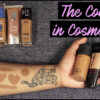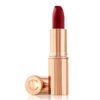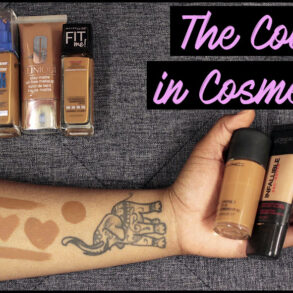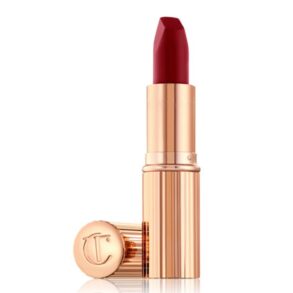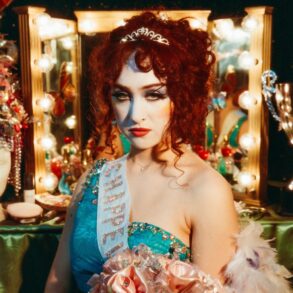Meagan Good’s hair can change with each project. In Prime Video’s Harlem, red dreads trace her back, in Shazam! Fury of the Gods she wears a curled bob, and in Think Like A Man, she sports a middle part with a swept bang. Despite her hair’s versatility, not every stylist gets it right. As a teenager, one stylist even let a piping hot pressing comb sear her scalp.
“I ended up with six tooth marks in the middle of my forehead,” Good tells Rolling Stone.
By her 20s and 30s, she’d grown accustomed to bringing a toolbox filled with hair products and makeup shades to set. She later began instructing aspiring actors to do the same.
“You’re on set and everybody else is working, but those moments when you jump out of hair and makeup, you’re now in your trailer rushing, spending 15-20 minutes trying to redo what could have been done right,” explains Good.
A provision in the new contract between Hollywood studios and unionized actors could help change that. On Nov. 8, the Screen Actors Guild approved a tentative deal with Hollywood studios and streamers. Although SAG-AFTRA members, or the Screen Actors Guild and the American Federation of Television and Radio Artists, have expressed hesitation and confusion around the “existential threat” of AI, the deal has made inclusive strides around hair and makeup services, a major development for performers with textured hairstyles or darker complexions who have faced discrimination.
Getting a makeover in the styling chair helps the actor transform into the character, says Linda Powell, the SAG-AFTRA national executive vice president.
“You can tell the minute somebody touches your head whether they know what to do with it,” Powell tells Rolling Stone.
The hair and makeup provision aims to create peace of mind for actors who have experienced hair damage, bad barbering or poor makeup jobs, she maintains.
“All of us have felt at some point disrespected in the chair because of a lack of understanding of who we were when we sat down,” says Powell.
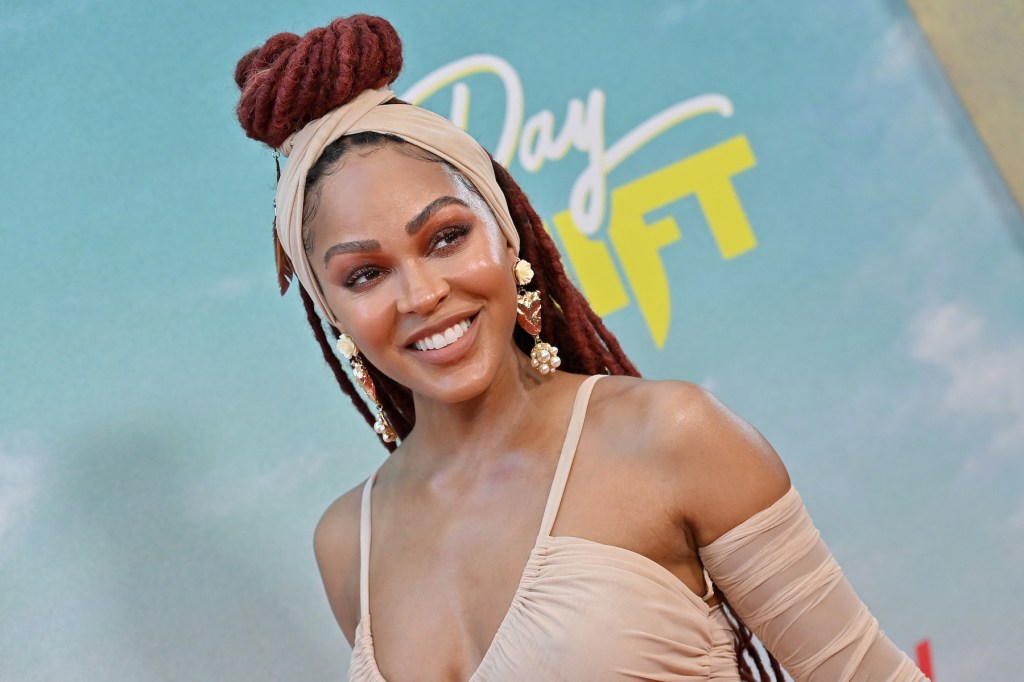
Actress Meagan Good.
Axelle/Bauer-Griffin/FilmMagic/Getty
By 2025, Powell believes everyone should feel comfortable on set, no matter the circumstances.
Each principal performer, or actors with speaking roles, will have an opportunity to consult with production about their hair and makeup needs ahead of filming. If a producer is unable to meet their requirements, the actor will receive compensation for seeking help elsewhere, covering a minimum of two hours in the styling chair, according to SAG-AFTRA’S deal.
Stacey Morris, a former hairstylist and barber on black-ish, has styled the likes of Anthony Anderson, Eddie Murphy, Martin Lawrence, and Lil Nas X to name a few, and calls the provision monumental for an industry that’s historically underserved and damaged textured hair.
Still, she says that actors with more kinkier hairstyles should only have to worry about their performance in front of the camera, rather than booking their own hair appointment. Morris says it’s akin to washing your hands of the problem rather than addressing the lack of stylists familiar with curl patterns.
“I do feel like we’re still not being accommodated like others with less textured hair,” Morris offers. “So we’re still kind of marginalized.”
SAG-AFTRA and the Hollywood studios, or the Association of Motion Picture and Television Producers (AMPAS), plan to meet with IATSE, which represents hair, makeup and other entertainment crews, to maintain and increase the number of hair stylists and makeup artists who are qualified to work with all races and ethnicities. In addition, both parties plan to recommend allocating funds to train makeup and hair experts on all hair textures and skin tones, according to the summary agreement.
Although the proposal provides resources to principal actors, Morris emphasizes that it excludes background actors.
“What happens to the other people?” Morris asks. “What happens to No. 15 on the call sheet that was cast yesterday and shoots tomorrow?”
Towanda Underdue, a SAG-AFTRA negotiating committee and board member, says the union had been bargaining for hair and makeup rights before actors went on strike in July, with the aim to cover background actors, too. But Hollywood executives pushed back on it till the last days of the negotiations. It’ll be a high priority item on the next contract, she adds.
“It’s just an equity issue,” Underdue reasons. “And somehow they can’t comprehend how that would benefit all of the members.”
We were three different shades and they used the darkest shade on all of us. So I almost looked like I had blackface.
During negotiations, Underdue says SAG-AFTRA created presentations and had members share stories of styling and makeup nightmares with Hollywood executives. Underdue was among those who testified, and remembers the gasps in the room when she showed a photo of a correct and botched makeup look.
“I’ve gone to set at times and they’ve only had one color of foundation for those of color that were on the set in a principal role,” Underdue says. “We were three different shades and they used the darkest shade on all of us. So I almost looked like I had blackface.”
The issue does not only affect people with darker complexions. Underdue recalls an Asian union member saying that she attended a production and was told they had an “Asian No. 1” foundation for her.
“There are so many persons of color that have been discriminated against and it seemed like it was just a normal thing that we dealt with and we didn’t always feel heard,” Underdue says. “But now we feel heard.”
Andrea Lewis is the creator behind the docuseries The Black Beauty Effect, which celebrates Black beauty by chronicling the history and creation of skin and hair products. Her vision for the documentary, which began streaming on Netflix Oct. 15, originated from her experience as an actor who was expected to show up to set in full hair and makeup.
“They would just say, ‘Oh my gosh, you look great. You don’t need anything,’ which can seem like it’s the ideal thing to do, but it’s actually the laziest thing to do,” Lewis recalls.
As a cast member on Degrassi: The Next Generation for five seasons, Lewis says she would attend class for the first half of the day and head to set with her straightened hair pushed back with a headband. And for most of those seasons, her hair remained untouched.
“How do we represent her in the way that she represents herself every single day?” Lewis asks. “And should I wear my hair one way all my life? No. And Black women culturally do not just wear their hair one way.”
Hollywood studios and streamers have slowly started to embrace diverse hairstyles. In recent years, directors and stylists in shows like black-ish, Insecure and The Other Black Girl have begun to showcase the intricacies and versatility of Afro-textured hair. And with a hair and makeup provision within SAG-AFTRA and the AMPTP’s tentative agreement, Hollywood studios and producers are beginning to catch up.
“Oftentimes, Black hair is treated like it’s difficult, regardless of the texture, and Black hair is probably the most diverse hair there is,” Lewis says. “There’s kinky, there’s curly, there’s coily, there’s loose, there’s long, there’s tight, there’s so many different versions of Black hair.”

